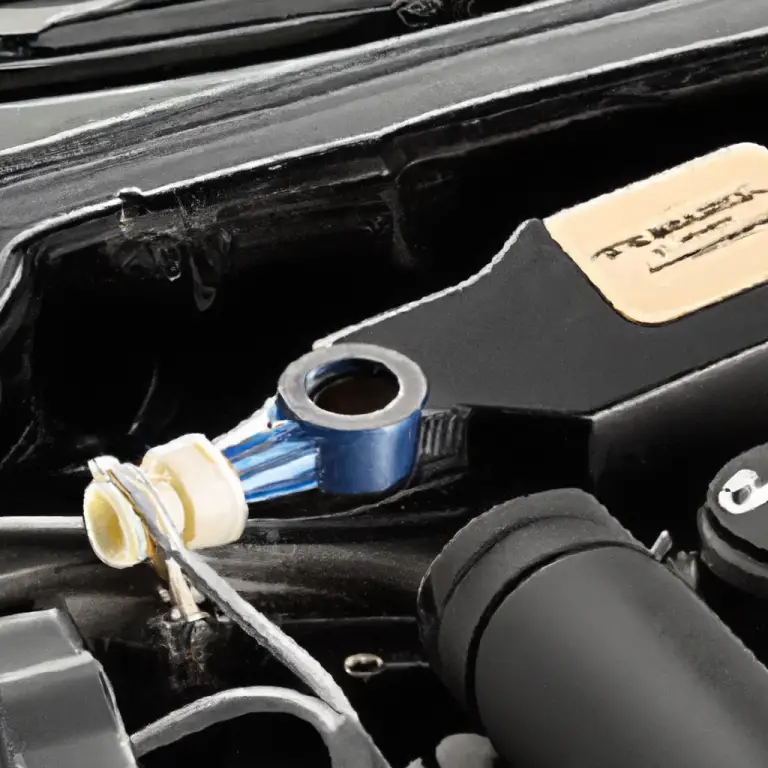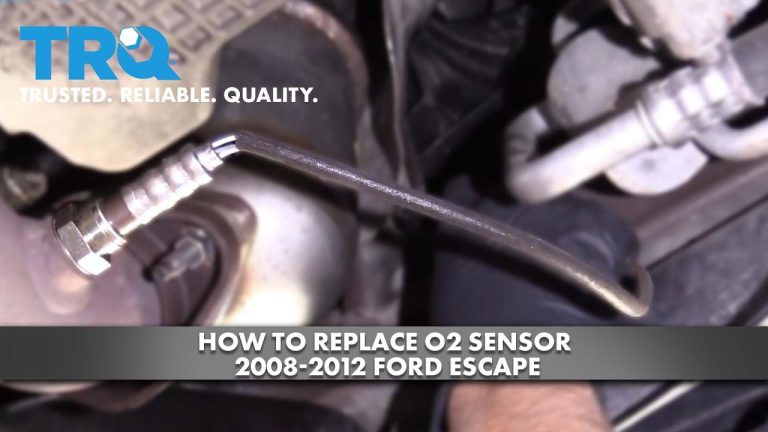2008 Ford F150 Fuse Box Location
In this comprehensive article, we’ll provide detailed guidance on exactly where to find the fuse box in a 2008 Ford F150, a crucial starting point for diagnosing and repairing many electrical issues. The specific information presented is aimed to assist Ford owners, DIY enthusiasts, mechanics, and anyone interested in vehicle maintenance, as we remain dedicated to simplifying auto repair needs. With an enjoyable yet utterly professional and informative approach, this article serves as a valuable guide to maintain optimal performance of your Ford F150.

Understanding the F150 Fuse Box
Components of the fuse box
The fuse box of a Ford F150 is a critical car component that often gets overlooked. It comprises various fuses, each responsible for protecting specific electrical circuits within the vehicle. Each fuse is a small, wire-filled device enclosed in a plastic casing. They serve as circuit protectors, disarming the circuit whenever there’s an overload of electrical current. Other key components include connectors, circuits, the housing, which collectively ensure the smooth operation of the vehicle’s electrical system.
Function of the fuse box in a vehicle
A fuse box, or fuse panel as it’s commonly referred to, serves a pivotal role in protecting a vehicle’s electrical system. It’s home to an array of fuses, each designed to handle a specific amount of amperage. When the current in a given circuit surpasses its designated safe limit, the fuse responsible for that circuit “blows” or breaks, thereby breaking the current and conserving the particular electrical system from harm.
Specifics of the Fuse Box in a 2008 Ford F150
A uniquely laid-out fuse box characterizes the 2008 Ford F150, strategically designed for easy access and maintenance. Detailed diagrams typically accompany it, guiding owners on the particular function of each fuse. Recognizing the fuse structure of the 2008 F150 fuse box enables trouble-free identification and replacement of faulty fuses, ultimately allowing for smoother vehicle performance.
2008 Ford F150 Fuse Box Location
Identifying the Fuse Box
The fuse box for the 2008 Ford F150 is typically black or grey box composed of a dense, heavy-duty plastic to safeguard the internal fuses. It’s characterized by multiple small slots, each housing a different fuse. A diagram, either on the inside of the cover or in the vehicle’s manual, often accompanies it to detail what each fuse controls.
Places to locate
The fuse box in a 2008 Ford F150 is usually located under the right-hand side of the instrument panel. To clarify, you’ll find it when you open the front passenger door and look down near the spot where the door hinges. In some F150 models, there might be a second fuse panel located in the engine compartment. The fuse box contains a variety of fuses and relays, including the essential ford f150 starter relay. It’s important to regularly check and replace any blown fuses or faulty relays to ensure the smooth operation of the vehicle. If you are having trouble locating or accessing the fuse box, consult the owner’s manual for detailed instructions.
Detailed description of the position
The fuse box is cleverly tucked away to protect it from damage, while still being easily accessible. As you open the front passenger door, take a look at the area near the door hinges. The fuse box is typically positioned in the lower right region beneath the dashboard. The cover should be simple to remove, providing you with direct access to the fuses inside.
Signs of a Faulty F150 Fuse Box
Warning lights on dashboard
One of the most common signs of a faulty fuse box in your F150 could be unlit or flickering warning lights on your vehicle’s dashboard. These could include the check engine light, brake light, or other system-specific lights. Inconsistent or unresponsive lights could be indicative of a blown fuse.
Electrical components not working
Another sign of a troubled fuse box is when various electrical components in the vehicle abruptly stop working. This failure could start from the radio, headlights, windshield wipers, or even power windows. If a specific component in your Ford F150 isn’t functioning, a blown fuse could be the underlying cause.
Observing blown fuses
If you inspect the fuse box and notice any fuses with blackened or burnt wire inside, or the wire filament appears broken, these are signs of blown fuses. It is, therefore, crucial, to replace these immediately to avoid further potential electrical issues.

How to Access the Fuse Box
Step-by-step Guide
To access the fuse box, first, ensure that the vehicle is off. Start by opening the front passenger door. Look towards the door hinges, somewhere beneath the dashboard on the right-hand side, and there lies the fuse box. The cover may be stiff, but it should pop off with a bit of pressure.
Tools required
Apart from your bare hands, no special tools are typically required to access the fuse box in a 2008 Ford F150. However, to remove a blown fuse, a fuse puller, which often comes with the car and is stored inside the fuse box, may come in handy.
Safety precautions to take
In dealing with electrical components, safety should always come first. Prior to handling the fuse box or attempting to replace any fuses, the vehicle should be switched off. Furthermore, it’s advisable to disconnect the battery before carrying out any work. Always wear insulated gloves for extra safety.
Interpreting the 2008 Ford F150 Fuse Diagram
Understanding fuse abbreviations
The diagram inside the F150 fuse box cover or the vehicle handbook uses a series of abbreviations and numbers to highlight the location and role of each fuse. Studying these codes provides a precise understanding of the function of each fuse, which is invaluable when troubleshooting electrical issues.
Interpreting the charts and diagrams
The chart within the fuse box cover typically illustrates a simplified layout of the fuse box, marking each fuse slot with a number and its corresponding function. By referring to this diagram, you can quickly identify the exact location of each fuse and its specific role within the car’s electrical system.
Locating the fuses on the diagram
Consulting the chart enables you to locate the precise fuse that may need replacing. It provides a straightforward map of the fuse box, helping you easily find the specific fuse relevant to the component that isn’t functioning.
Particle Fuse Issues in a 2008 Ford F150
Common blown fuses
Commonly blown fuses in a 2008 Ford F150 usually correspond to frequently used or high-demand electrical components like headlights, power windows, the radio, or the charging system. If any of these systems exhibit erratic behavior, checking for blown fuses should be your initial troubleshooting step.
Diagnosing potential problems
Diagnosing fuse-related problems involves inspecting for potential blown fuses, checking the component that the fuse corresponds to, and evaluating the electrical flow through the fuse. Notably, repeated blowing of the same fuse could suggest an underlying electrical issue requiring further investigation or professional assistance.
Understanding which fuses relate to which vehicle functions
Understanding which fuses correspond to specific vehicle functions is crucial to effective troubleshooting. For instance, if the radio isn’t working, finding the fuse associated with the radio’s circuit and examining it could help determine if a blown fuse is triggering the problem.
Replacing Fuses in a 2008 Ford F150
How to safely remove blown fuses
To safely remove a blown fuse, you’ll need to use a fuse puller or needle-nose pliers. Once you’ve identified the faulty fuse, delicately pull it out, taking care not to damage any adjacent fuses.
Choosing the correct replacement fuse
When replacing a fuse, make certain to choose an identical replacement in terms of the amperage rating. Using a fuse of a different rating may cause more electrical damage, or worse, start a fire. Always refer to the fuse box diagram for the correct fuse specification.
Steps to install the new fuse
Installing a new fuse is straightforward. Simply push the new fuse into the slot from where the faulty fuse was removed. Ensure it’s seated properly, then replace the fuse box cover. After completion, start the vehicle, and verify that the previously non-working component is now functioning correctly.
Consequences of Neglecting a Faulty Fuse Box
Potential risks
Ignoring a faulty fuse box can result in severe implications, including electrical failure which may impede your vehicle’s performance or, in extreme circumstances, trigger electrical fires due to overloaded circuits.
Impact on vehicle performance
A faulty fuse box can have a negative domino effect on your vehicle’s performance. Failures in various electrical systems, from lighting to sensors, can disrupt the overall vehicular function and driving experience.
Cost of major repairs compared to replacing fuses
Neglecting a faulty fuse box and the resulting potential damage can lead to hefty repair costs in contrast to the relatively low cost of simply replacing blown fuses. Preventive maintenance of the fuse box ensures the optimal functioning of your vehicle while saving significantly on potential repair expenditures.
Tips to Maintain the Fuse Box
Routine checks
Regularly inspecting the fuse box for blown fuses or signs of wear and tear is vital for proper maintenance. Ensuring all fuses are in good condition helps keep the vehicle’s electrical system working efficiently.
Cleaning the fuse box
While the fuse box is naturally protected due to its location, dust and dirt can still build up over time. Keeping the fuse box clean, free of debris, and ensuring all connections are secure contributes to its optimal function.
Avoiding common mistakes
When dealing with the fuse box, always make sure to use the right fuse types based on manufacturer recommendations. Overlooking this aspect can disrupt the electrical balance and potentially cause damage.
Where is the Power Inverter Located in a 2008 Ford F150?
The f150 power inverter installation guide provides instructions on where to locate the power inverter in a 2008 Ford F150. The power inverter is usually located under the center console or in the rear storage compartment. Referring to the f150 power inverter installation guide will help you easily locate it in your vehicle.
Professional Help for Fuse Box Issues
When to seek professional help
While some fuse issues can be efficiently handled individually, persistent or recurrent issues may require a professional’s attention. If a specific fuse keeps blowing without a clear cause, or there seems to be a problem with the fuse box itself, it’s wise to seek professional help.
Choosing a reliable mechanic for your Ford F150
Select a reliable mechanic who is adept in dealing with a Ford F150 can make all the difference. Knowledgeable professionals can quickly identify and rectify fuse and other related issues, ensuring your vehicle remains in prime condition.
Estimating cost of professional repair or replacement
The cost of professional repair or fuse box replacement can vary based on the extent of the issue, labor rates, and the parts required. Nevertheless, investing in professional assistance is essential in preventing further electrical damage and maintaining the overall health and performance of your Ford F150.






